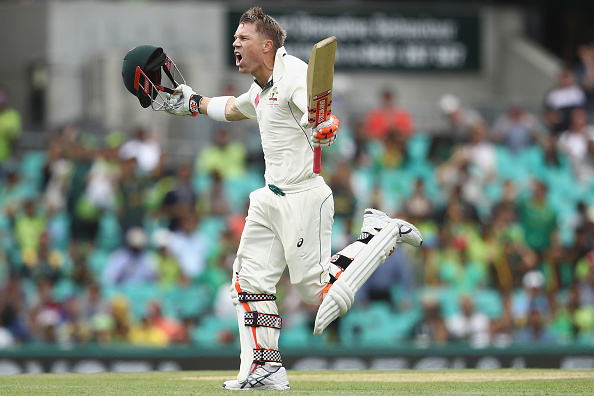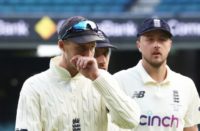There is much goodwill suddenly fostering within Australian cricket after a successful rebirth and seamless transition into a new era. Following a horrendous stretch last year, Australia are on the cusp of winning their fourth straight Test, something they haven’t achieved in three years.
True, their success has been aided by a typically fragile Pakistani team but, still, it has been an impressive fightback by a new-look Australian team, highlighted by the emergence of young batsmen Matt Renshaw and Peter Handscomb, who appear to be mainstays after highly promising starts to their Test careers.
Suddenly, whispers are echoing around the country: “Bring on England”! The Ashes excitingly loom and, honestly, it is really the only series Australians – bar the absolute diehards – care about. Embarrassments in far-flung places are quickly forgotten – or not even noticed as they usually occur during the winter months when the football codes dominate – and even national travesties on home soil against South Africa cause only temporary pain.
The Ashes forever resonate, meaning legacies and eras are often defined by them. Ricky Ponting’s captaincy stint will forever have a major stain having presided over a home Ashes defeat, the only time England has won Down Under in the past three decades.
Much planning in Australian cricket revolves around looming Ashes series, with an eye always aimed at their oldest foe. A prime example is the use of the English Dukes ball during the current Sheffield Shield season, in a bid to help players prepare better for an Ashes tour that isn’t scheduled until 2019.
With a home Ashes tilt just 10 months away, anticipation is building but, truthfully, it is almost impossible to foreshadow. It is difficult to have an accurate gauge on Australia’s pulse, whose fortunes have swung wickedly in recent months.
With a daunting tour of India starting in February, there is a distinct possibility that all the positivity emanating from the team will be eroded if things go ugly for them. Much like their shambolic tour of Sri Lanka last year, Australia’s batting line-up could well be tangled and strangled by Indian spinners, who are almost impossible to curtail in favourable conditions.
So, in a few months we well may be facing some more hard truths about this Australian team warranting another recalibration. But those talking points are for later. Right now, Australia’s adopted youth policy – instituted after chairman of selectors Rod Marsh departed in November – has yielded instant results with 20-year-old Renshaw providing maturity beyond his years at the top and Handscomb, 25, instilling class into a fragile middle-order.
Of course, the arduous Indian conditions will test the impressive duo like never before and it will remain to be seen whether they are up to the challenge. After India, in terms of Test cricket, Australia may only have a tour of Bangladesh mid-year – yet to be confirmed – before the Ashes.
Highly likely, there will remain question marks on Australia’s make-up but, undoubtedly, Australia has four superstars in their team, which should ensure they remain one to be reckoned with, particularly at home where they are highly difficult to beat – South Africa excepted.
Australia may be riddled with uncertainties and remain an evolving side, but having Dave Warner and Steve Smith in the top-order is a great starting point to build a team around. At home, Warner averages almost 60, while Smith has an even more stellar mark of 70. They are the backbone to Australia’s team with Warner able to change the course of the match in a matter of hours – as evidenced by his astonishing century during the opening session of the SCG Test against Pakistan.
Warner’s firepower coupled with Smith’s consistency drive Australia’s batting, one which England will desperately need to stymie if they are to hold onto the Ashes. South Africa’s relentless accuracy – aided by seaming pitches – curtailed the pair, particularly Warner who was frustrated by the Proteas’ probing bowling at the stumps. Pakistan’s players haven’t sung from the South African hymn sheet and, accordingly, their wayward bowling has been eviscerated by a rampant Warner.
Beyond the pair, Usman Khawaja looms as a key figure having been suddenly propelled into a senior role during Australia’s renewal. The 30-year-old is a temperamental batsman; there are times when he looks almost unstoppable but is often undone by moments of lethargy.
Khawaja was dropped in Sri Lanka but has re-emerged this Australian summer with a stellar comeback, where he was notably Australia’s best batsman against South Africa. When in form, the elegant left-hander considerably strengthens Australia’s top-order but, again, the tour of India could define him.
Similarly, Australia’s bowling attack relies heavily on superstar spearheads Mitchell Starc and Josh Hazlewood, who have carried an enormous burden during the Australian season. Starc, the left-arm gunslinger, is very much a doppelganger to Mitchell Johnson although, pleasingly for Australian fans, he seems more consistent than his erratic predecessor. There is an expectation from Australian fans that Starc will emulate Johnson’s 2013-14 deeds, where he consistently scythed through a shell-shocked England team.
Perfectly complementing Starc, Hazlewood has been Australia’s best performer this season with unnerving accuracy and is set to adopt the supporting role perfected by Stuart Clark and Ryan Harris during Australia’s Ashes whitewashes in 2006-07 and 2013-14 respectively.
Support behind Starc and Hazlewood has been less stable although Jackson Bird has admirably filled the breach as the third seamer. With all due respect to Bird, he is merely a stopgap option until precocious pacemen Pat Cummins and James Pattinson unshackle the injury scourge.
Australia have long lusted over the ‘dream team’ bowling line-up of Starc, Hazelwood, Cummins and Pattinson –Australian coach Darren Lehmann has even likened that foursome to the West Indies’ legendary pace battery of yesteryear.
In a further indication of the Ashes’ importance, Cummins has been placed in cotton wool and is unlikely to be rushed into Australia’s Test team for the tour of India despite intoxicating performances during the recent Chappell-Hadlee series. Cricket Australia’s vision is for Cummins to be unfurled during the Ashes; he remains the X-factor of the side.
With such a potentially devastating pace arsenal and a developing batting line-up, Australia will be considerably more upbeat of regaining the Ashes despite likely road bumps in the Sub-continent beforehand.
With England also undergoing regeneration, many of the figures defining the Ashes of the past decade are gone. With young stars emerging, a new era of the historic rivalry excitingly awaits; the Ashes 2017-18 can’t come soon enough.
This piece originally featured in The Cricket Paper, January 6 2017
Subscribe to the digital edition of The Cricket Paper here












